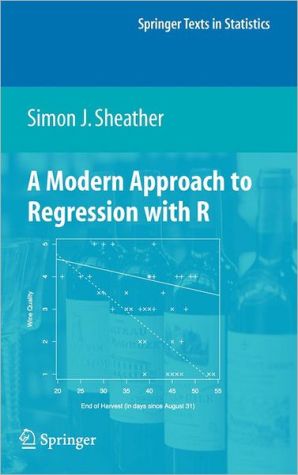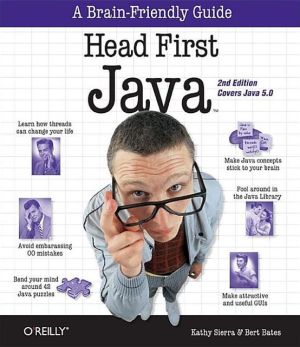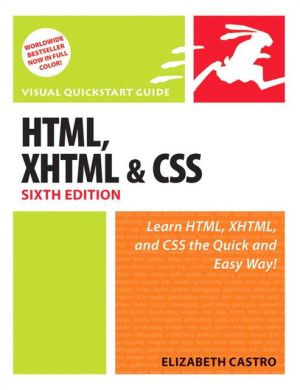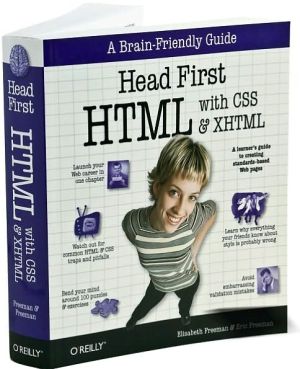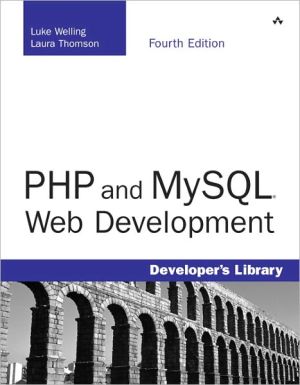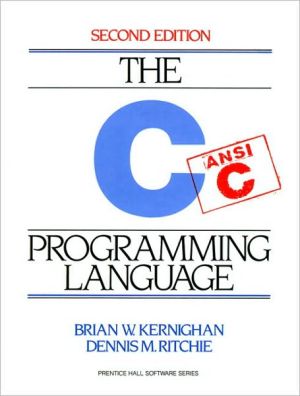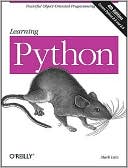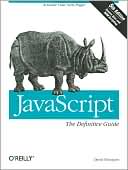A Modern Approach to Regression with R
A Modern Approach to Regression with R focuses on tools and techniques for building regression models using real-world data and assessing their validity. A key theme throughout the book is that it makes sense to base inferences or conclusions only on valid models.\ The regression output and plots that appear throughout the book have been generated using R. On the book website you will find the R code used in each example in the text. You will also find SAS-code and STATA-code to produce the...
Search in google:
A Modern Approach to Regression with R focuses on tools and techniques for building regression models using real-world data and assessing their validity. A key theme throughout the book is that it makes sense to base inferences or conclusions only on valid models. The regression output and plots that appear throughout the book have been generated using R. On the book website you will find the R code used in each example in the text. You will also find SAS-code and STATA-code to produce the equivalent output on the book website. Primers containing expanded explanations of R, SAS and STATA and their use in this book are also available on the book website. The book contains a number of new real data sets from applications ranging from rating restaurants, rating wines, predicting newspaper circulation and magazine revenue, comparing the performance of NFL kickers, and comparing finalists in the Miss America pageant across states. One of the aspects of the book that sets it apart from many other regression books is that complete details are provided for each example. The book is aimed at first year graduate students in statistics and could also be used for a senior undergraduate class.
1 Introduction 11.1 Building Valid Models 11.2 Motivating Examples 11.2.1 Assessing the Ability of NFL Kickers 11.2.2 Newspaper Circulation 11.2.3 Menu Pricing in a New Italian Restaurant in New York City 51.2.4 Effect of Wine Critics' Ratings on Prices of Bordeaux Wines 81.3 Level of Mathematics 132 Simple Linear Regression 152.1 Introduction and Least Squares Estimates 152.1.1 Simple Linear Regression Models 152.2 Inferences About the Slope and the Intercept 202.2.1 Assumptions Necessary in Order to Make Inferences About the Regression Model 212.2.2 Inferences About the Slope of the Regression Line 212.2.3 Inferences About the Intercept of the Regression Line 232.3 Confidence Intervals for the Population Regression Line 242.4 Prediction Intervals for the Actual Value of Y 252.5 Analysis of Variance 272.6 Dummy Variable Regression 302.7 Derivations of Results 332.7.1 Inferences about the Slope of the Regression Line 342.7.2 Inferences about the Intercept of the Regression Line 352.7.3 Confidence Intervals for the Population Regression Line 362.7.4 Prediction Intervals for the Actual Value of Y 372.8 Exercises 383 Diagnostics and Transformations for Simple Linear Regression 453.1 Valid and Invalid Regression Models: Anscombe's Four Data Sets 453.1.1 Residuals 483.1.2 Using Plots of Residuals to Determine Whether the Proposed Regression Model Is a Valid Model 493.1.3 Example of a Quadratic Model 503.2 Regression Diagnostics: Tools for Checking the Validity of a Model 503.2.1 Leverage Points 513.2.2 Standardized Residuals 593.2.3 Recommendations for Handling Outliers and LeveragePoints 663.2.4 Assessing the Influence of Certain Cases 673.2.5 Normality of the Errors 693.2.6 Constant Variance 713.3 Transformations 763.3.1 Using Transformations to Stabilize Variance 763.3.2 Using Logarithms to Estimate Percentage Effects 793.3.3 Using Transformations to Overcome Problems due to Nonlinearity 833.4 Exercises 1034 Weighted Least Squares 1154.1 Straight-Line Regression Based on Weighted Least Squares 1154.1.1 Prediction Intervals for Weighted Least Squares 1184.1.2 Leverage for Weighted Least Squares 1184.1.3 Using Least Squares to Calculate Weighted Least Squares 1194.1.4 Defining Residuals for Weighted Least Squares 1214.1.5 The Use of Weighted Least Squares 1214.2 Exercises 1225 Multiple Linear Regression 1255.1 Polynomial Regression 1255.2 Estimation and Inference in Multiple Linear Regression 1305.3 Analysis of Covariance 1405.4 Exercises 1466 Diagnostics and Transformations for Multiple Linear Regression 1516.1 Regression Diagnostics for Multiple Regression 1516.1.1 Leverage Points in Multiple Regression 1526.1.2 Properties of Residuals in Multiple Regression 1546.1.3 Added Variable Plots 1626.2 Transformations 1676.2.1 Using Transformations to Overcome Nonlinearity 1676.2.2 Using Logarithms to Estimate Percentage Effects: Real Valued Predictor Variables 1846.3 Graphical Assessment of the Mean Function Using Marginal Model Plots 1896.4 Multicollinearity 1956.4.1 Multicollinearity and Variance Inflation Factors 2036.5 Case Study: Effect of Wine Critics' Ratings on Prices of Bordeaux Wines 2036.6 Pitfalls of Observational Studies Due to Omitted Variables 2106.6.1 Spurious Correlation Due to Omitted Variables 2106.6.2 The Mathematics of Omitted Variables 2136.6.3 Omitted Variables in Observational Studies 2146.7 Exercises 2157 Variable Selection 2277.1 Evaluating Potential Subsets of Predictor Variables 2287.1.1 Criterion 1: R2-Adjusted 2287.1.2 Criterion 2: AICc, Akaike's Information Criterion 2307.1.3 Criterion 3: AICc, Corrected AIC 2317.1.4 Criterion 4: BIC, Bayesian Information Criterion 2327.1.5 Comparison of AIC, AICc and BIC 2327.2 Deciding on the Collection of Potential Subsets of Predictor Variables 2337.2.1 All Possible Subsets 2337.2.2 Stepwise Subsets 2367.2.3 Inference After Variable Selection 2387.3 Assessing the Predictive Ability of Regression Models 2397.3.1 Stage 1: Model Building Using the Training Data Set 2397.3.2 Stage 2: Model Comparison Using the Test Data Set 2477.4 Recent Developments in Variable Selection-LASSO 2507.5 Exercises 2528 Logistic Regression 2638.1 Logistic Regression Based on a Single Predictor 2638.1.1 The Logistic Function and Odds 2658.1.2 Likelihood for Logistic Regression with a Single Predictor 2688.1.3 Explanation of Deviance 2718.1.4 Using Differences in Deviance Values to Compare Models 2728.1.5 R2 for Logistic Regression 2738.1.6 Residuals for Logistic Regression 2748.2 Binary Logistic Regression 2778.2.1 Deviance for the Case of Binary Data 2808.2.2 Residuals for Binary Data 2818.2.3 Transforming Predictors in Logistic Regression for Binary Data 2828.2.4 Marginal Model Plots for Binary Data 2868.3 Exercises 2949 Serially Correlated Errors 3059.1 Autocorrelation 3059.2 Using Generalized Least Squares When the Errors Are AR(1) 3109.2.1 Generalized Least Squares Estimation 3119.2.2 Transforming a Model with AR(1) Errors into a Model with iid Errors 3159.2.3 A General Approach to Transforming GLS into LS 3169.3 Case Study 3199.4 Exercises 32510 Mixed Models 33110.1 Random Effects 33110.1.1 Maximum Likelihood and Restricted Maximum Likelihood 33410.1.2 Residuals in Mixed Models 34510.2 Models with Covariance Structures Which Vary Over Time 35310.2.1 Modeling the Conditional Mean 35410.3 Exercises 368Appendix: Nonparametric Smoothing 371References 383Index 387
